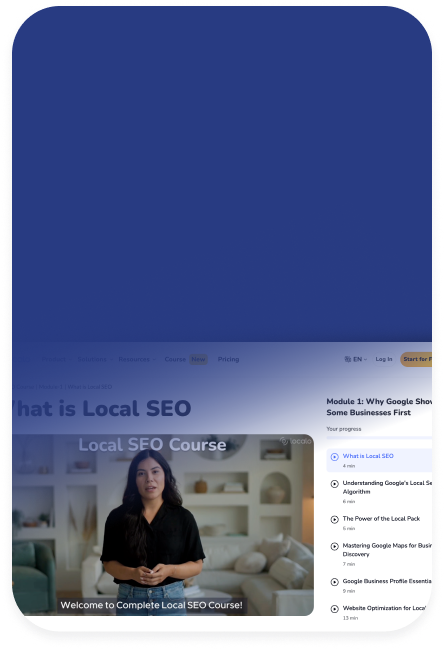
Ready to get more customers calling?
Take FREE Local SEO Course
Available now in English
FOMO Marketing or ‘Fear Of Missing Out’) - is a strategy that exploits the natural human tendency to feel anxious or afraid of skipping or overlooking attractive offers or events only available for a limited time. FOMO marketing aims to get consumers to make a purchase decision more quickly by creating the impression of exclusivity and limited availability of products or services.

The use of FOMO marketing
In practice, FOMO marketing effectively motivates consumers to make quick purchase decisions, using elements such as limited availability, exclusivity of the offer, and time urgency. Here’s how FOMO marketing works in different aspects of marketing activity:
- Limited Availability - online shops often show few available products (e.g., “Only three pieces left!”). Such information suggests that the product may quickly disappear from the offer, prompting consumers to buy more rapidly to avoid missing out on the opportunity.
- Temporary Promotions - companies often organise temporary promotions, such as “sale ends at midnight” or “special price for the weekend only.” The time limitation of the promotion creates a sense of urgency and prompts potential customers to make a purchase decision before the offer expires.
- Exclusive Offers - brands may offer unique products or services only available to a specific group of customers, such as newsletter subscribers or loyalty programme members. The exclusivity of the offer makes customers feel special, and they value access to products that others cannot get, which increases their interest and engagement.
- Use of Social Media - companies often publish content marketing about fast-selling products or upcoming ‘can’t miss’ events. These posts are often shared and commented on, increasing their reach.
Benefits of FOMO Marketing
Here are the key benefits of FOMO marketing campaign:
- Increased conversion rate - FOMO marketing tactic motivates consumers to purchase more quickly. By creating a sense of urgency, such as through a time-limited offer or information about low product availability, customers are more likely to act immediately. This, in turn, translates into increased conversions and a shorter sales cycle.
- Increased customer engagement - FOMO marketing campaigns often lead to greater customer engagement. When consumers feel missing out on something, they are more likely to interact with the brand by subscribing to newsletters, following social media profiles, or attending events. This increased engagement builds deeper customer loyalty.
- Improved brand visibility and recognition - FOMO strategies often generate ‘buzz’ around products or services, especially on social media, where users are keen to share their purchases and experiences. This increases marketing reach and improves brand recognition among a wider audience.
- Increase order value - FOMO can prompt customers to add more products to their basket to take advantage of promotions or to reach the threshold needed to receive additional benefits such as free shipping or a gift. Customers who feel they are getting more value by acting quickly often choose to buy more.
- Encourage return and more frequent visits - regular special offers and time-limited promotions can encourage customers to visit a company’s website or physical shop more often. This not only increases the chances of sales but also keeps the brand in the minds of consumers.
Challenges and constraints
-
Risk of oversaturation: overuse of FOMO techniques can lead to material fatigue on the part of consumers, who may start to ignore such messages.
-
Impression of manipulation: if customers feel that they are being manipulated into constantly buying under pressure, this may negatively impact their perceptions of the brand.
-
Maintaining authenticity: it is essential that FOMO marketing strategies are authentic and genuinely valuable to consumers so that brand trust is not negatively affected.
Summary
While a powerful tool, FOMO marketing requires a skillful and thoughtful application to benefit both companies and their target audience while avoiding potential pitfalls related to brand perception.
![What is FOMO Marketing - Definition [Marketing Dictionary]](/assets/img/dictionary-background.webp)
